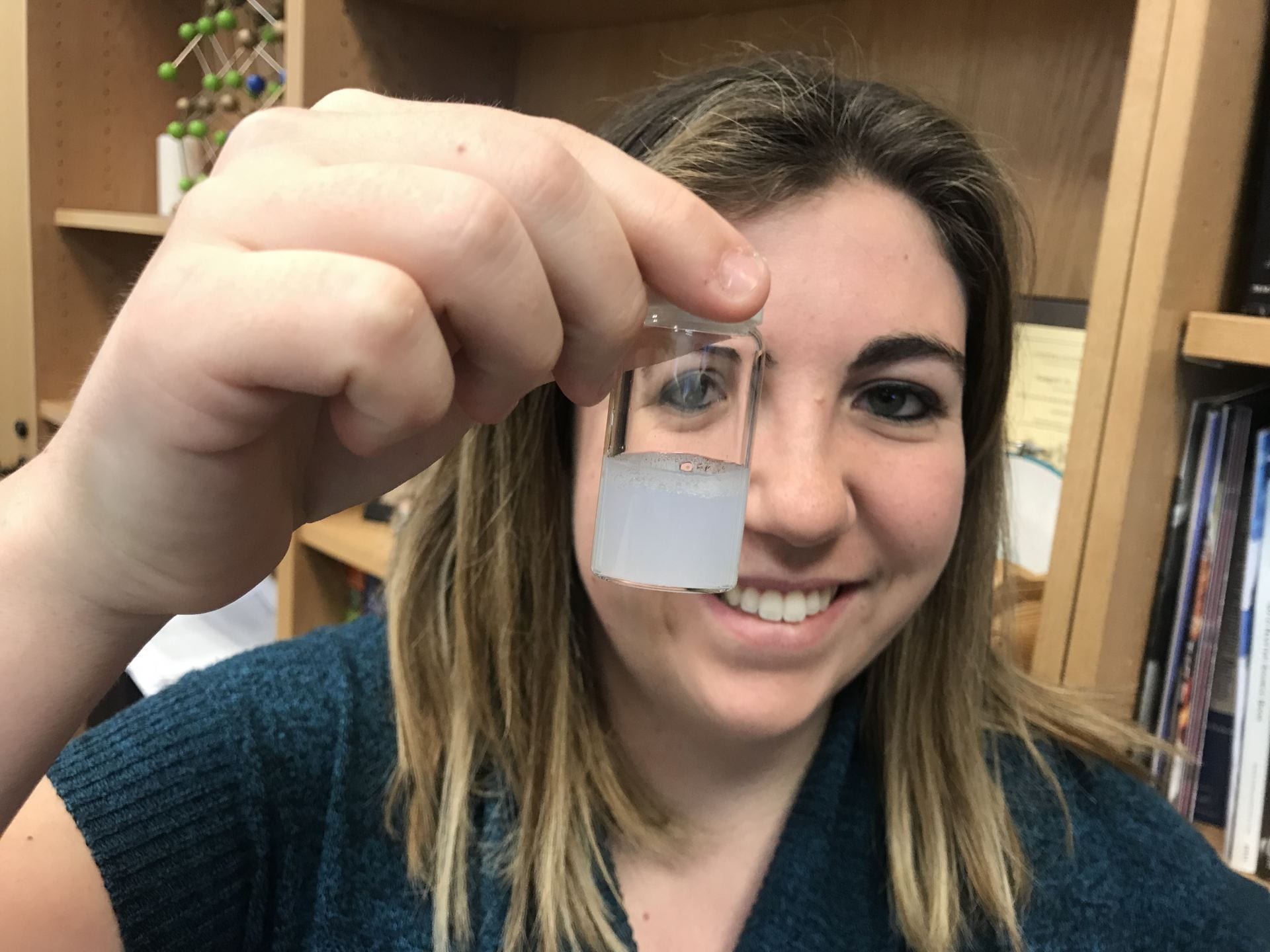Rice University research could lead to better protective shields for electronics, biomedical advances.
Boron nitride nanotubes sure do like to stick together. If they weren’t so useful, they could stay stuck and nobody would care. But because they are useful, Rice University chemists have determined that surfactants — the basic compounds in soap — offer the best and easiest way to keep boron nitride nanotubes (BNNTs) from clumping. That could lead to expanded use in protective shields, as thermal and mechanical reinforcement for composite materials and in biomedical applications like delivering drugs to cells.
The research led by Rice chemist Angel Martí appears this month in the Royal Society of Chemistry journal Nanoscale Advances.
 Rice University graduate student Ashleigh Smith McWilliams holds a vial of boron nitride nanotubes in solution. McWilliams led a Rice effort to find the best way to separate the naturally clumping nanotubes to make them more useful for manufacturing. The nanotubes turn the clear liquid surfactant white when they are dispersed.
Rice University graduate student Ashleigh Smith McWilliams holds a vial of boron nitride nanotubes in solution. McWilliams led a Rice effort to find the best way to separate the naturally clumping nanotubes to make them more useful for manufacturing. The nanotubes turn the clear liquid surfactant white when they are dispersed.
Once unstuck, boron nitride nanotubes show promise

